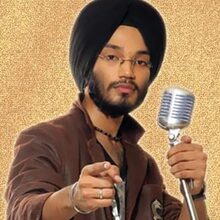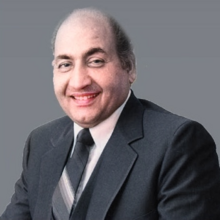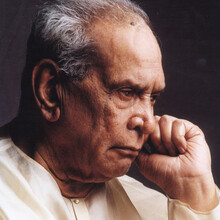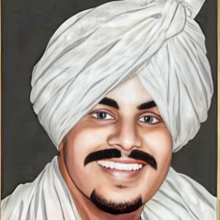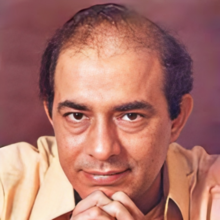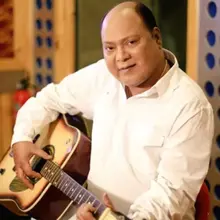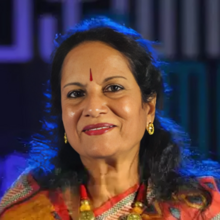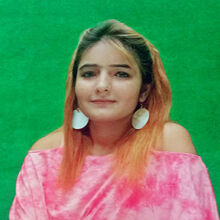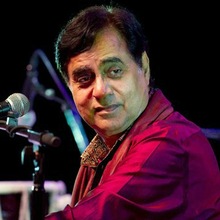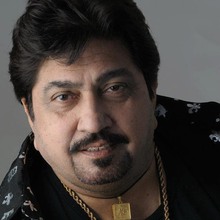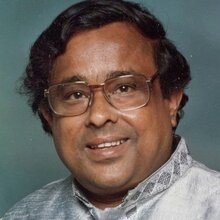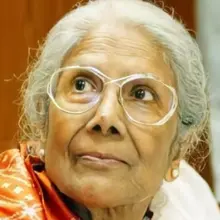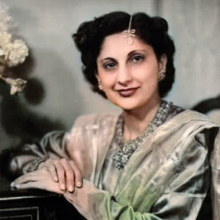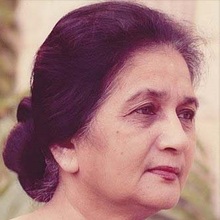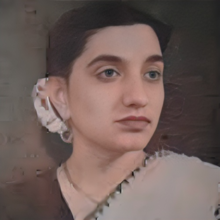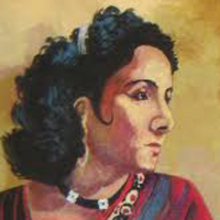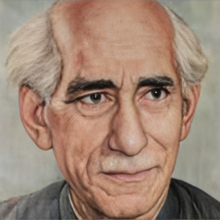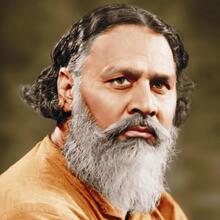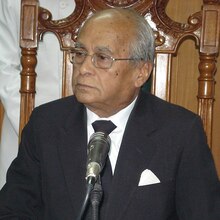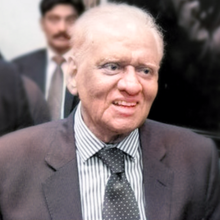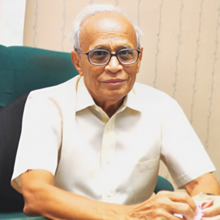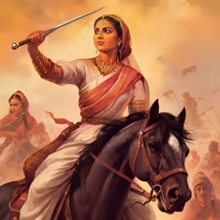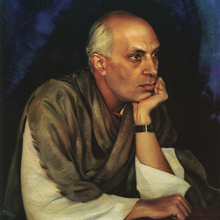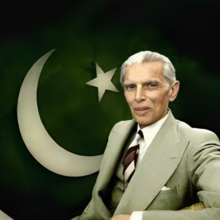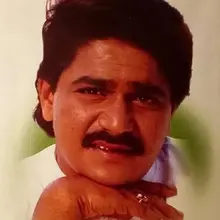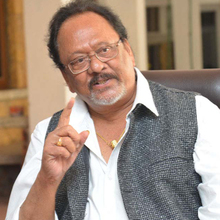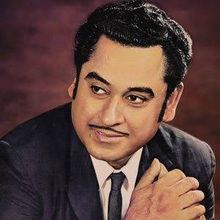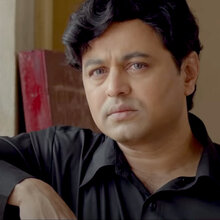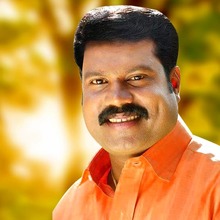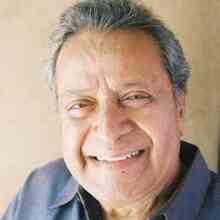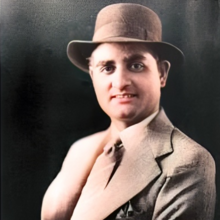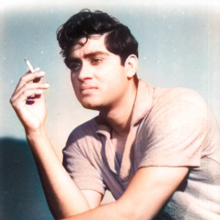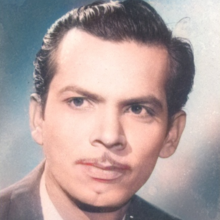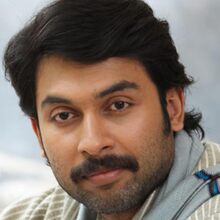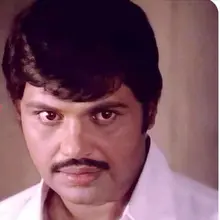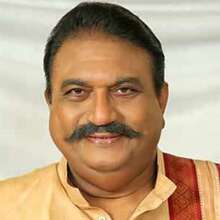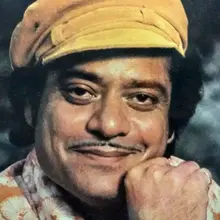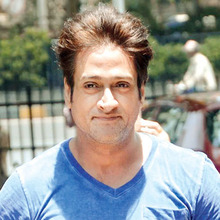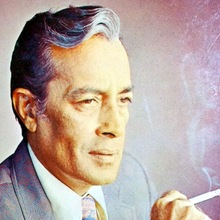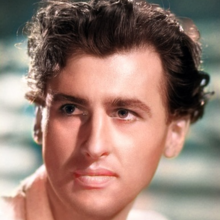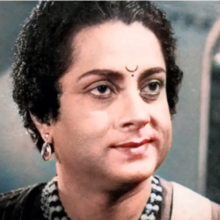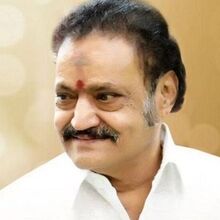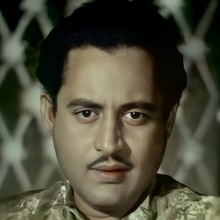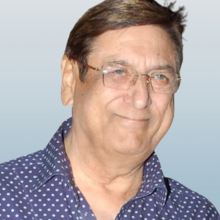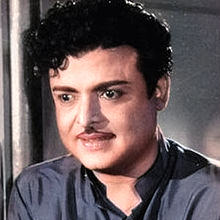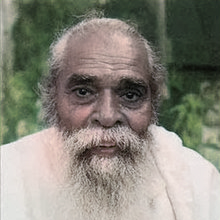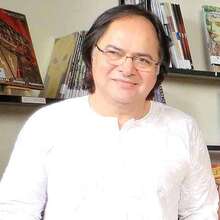 Sayedna Iftekhar Ahmed Sharif
1920 - 1995
Comedian, actor, writer, producer and director
Sayedna Iftekhar Ahmed Sharif
1920 - 1995
Comedian, actor, writer, producer and director
 Kundan Lal Saigal
1904 - 1947
Singer,actor,first superstar film industry
Kundan Lal Saigal
1904 - 1947
Singer,actor,first superstar film industry
 Dilip Kumar
1922 - 2021
Actor, film producer, and politician
Dilip Kumar
1922 - 2021
Actor, film producer, and politician
 Mohammad Yaqub Khan
1849 - 1923
Emir
Mohammad Yaqub Khan
1849 - 1923
Emir
 Rabindranath Tagore
1861 - 1941
Poet, writer, composer, painter, philosopher
Rabindranath Tagore
1861 - 1941
Poet, writer, composer, painter, philosopher
 Balwant Rai Mehta
1899 - 1965
Chief Minister of Gujarat
Balwant Rai Mehta
1899 - 1965
Chief Minister of Gujarat
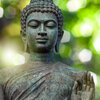 Buddha
-564 - -483
Buddha
-564 - -483
 Harikrishna Nandamuri
1956 - 2018
Actor, producer, and politician
Harikrishna Nandamuri
1956 - 2018
Actor, producer, and politician
 Adurthi Subba Rao
1912 - 1975
Director, cinematographer, screenwriter,
Adurthi Subba Rao
1912 - 1975
Director, cinematographer, screenwriter,
 Kunnisseri Veettil Raman Mani
1971 - 2016
Actor and singer, appeared in over 250 films
Kunnisseri Veettil Raman Mani
1971 - 2016
Actor and singer, appeared in over 250 films
 Johnny Walker
1924 - 2003
Actor, comedian, bus conductor
Johnny Walker
1924 - 2003
Actor, comedian, bus conductor
 Khawaja Nazimuddin
1894 - 1964
Second Governor-General and Prime Minister
Khawaja Nazimuddin
1894 - 1964
Second Governor-General and Prime Minister
 Indra Sen Johar
1920 - 1984
Comedian, actor, writer, producer and director
Indra Sen Johar
1920 - 1984
Comedian, actor, writer, producer and director
 Anup Ghoshal
1944 - 2023
Playback singer
Anup Ghoshal
1944 - 2023
Playback singer
 Dev Anand
1923 - 2011
Actor, director and producer of Hindi cinema
Dev Anand
1923 - 2011
Actor, director and producer of Hindi cinema
 Muddu Babu Shetty
1938 - 1982
Stuntman, action choreographer and actor
Muddu Babu Shetty
1938 - 1982
Stuntman, action choreographer and actor
 Syed Abdulla Hussain
1944 - 2009
Ornithologist and conservationist
Syed Abdulla Hussain
1944 - 2009
Ornithologist and conservationist
 Sayed Haider Raza
1922 - 2016
Modernist painter
Sayed Haider Raza
1922 - 2016
Modernist painter
 Phoolan Devi
1963 - 2001
Bandit leader, Member of Parliament
Phoolan Devi
1963 - 2001
Bandit leader, Member of Parliament
 Chandrashekhar Vaidya
1922 - 2021
Actor and filmmaker
Chandrashekhar Vaidya
1922 - 2021
Actor and filmmaker
 Joy Mukherjee
1924 - 2003
Actor, comedian, bus conductor
Joy Mukherjee
1924 - 2003
Actor, comedian, bus conductor
 Irruppam Veedu Sasidaran
1947 - 2017
Film director
Irruppam Veedu Sasidaran
1947 - 2017
Film director
 Indira Priyadarshini Gandhi
1917 - 1984
Prime Minister of India, leader
Indira Priyadarshini Gandhi
1917 - 1984
Prime Minister of India, leader
 Ada Jafri
1924 - 2015
Poet, writer, broadcaster
Ada Jafri
1924 - 2015
Poet, writer, broadcaster
 Maqbool Fida Husain
1915 - 2011
Modernist painter and filmmaker
Maqbool Fida Husain
1915 - 2011
Modernist painter and filmmaker
 Satish Gujral
1925 - 2020
Painter, sculptor, muralist, writer, architect
Satish Gujral
1925 - 2020
Painter, sculptor, muralist, writer, architect
 Vangaveeti Mohana Ranga
1919 - 1972
Chief Minister of Saurashtra, leader of opposition
Vangaveeti Mohana Ranga
1919 - 1972
Chief Minister of Saurashtra, leader of opposition
 Mankombu Sambasivan Swaminathan
1925 - 2023
Agronomist,agricultural scientist,plant geneticist
Mankombu Sambasivan Swaminathan
1925 - 2023
Agronomist,agricultural scientist,plant geneticist
 Kamala Sohonie
1911 - 1998
Biochemist and nutritionist
Kamala Sohonie
1911 - 1998
Biochemist and nutritionist
 Srinivasa Ramanujan
1887 - 1920
Mathematical genius
Srinivasa Ramanujan
1887 - 1920
Mathematical genius
 Obaid Siddiqi
1932 - 2013
Molecular biology, neurogenetics
Obaid Siddiqi
1932 - 2013
Molecular biology, neurogenetics
 Prafulla Dahanukar
1934 - 2014
Painter, leader in modern Indian art, benefactor
Prafulla Dahanukar
1934 - 2014
Painter, leader in modern Indian art, benefactor
 Harshita Dahiya
1995 - 2017
Playback singer
Harshita Dahiya
1995 - 2017
Playback singer
 Thanu Padmanabhan
1957 - 2021
Theoretical physicist and cosmologist
Thanu Padmanabhan
1957 - 2021
Theoretical physicist and cosmologist
 Azhikodan Raghavan
1919 - 1972
Chief Minister of Saurashtra, leader of opposition
Azhikodan Raghavan
1919 - 1972
Chief Minister of Saurashtra, leader of opposition
 Ila Ghose
1930 - 2019
Mechanical engineer , first woman engineer
Ila Ghose
1930 - 2019
Mechanical engineer , first woman engineer
 Raghavan Narasimhan
1937 - 2015
professor of mathematics at the University
Raghavan Narasimhan
1937 - 2015
professor of mathematics at the University
 Deven Verma
1937 - 2014
Actor, director and producer of Hindi cinema
Deven Verma
1937 - 2014
Actor, director and producer of Hindi cinema
 Jawaharlal Nehru
1889 - 1964
First prime minister of independent
Jawaharlal Nehru
1889 - 1964
First prime minister of independent
 Abhas Kumar Ganguly
1929 - 1987
Playback singer, actor, music director
Abhas Kumar Ganguly
1929 - 1987
Playback singer, actor, music director
 Balraj Sahni
1913 - 1973
Indian film and stage actor and writer
Balraj Sahni
1913 - 1973
Indian film and stage actor and writer
 Krishna Raju
1948 - 2002
Ornithologist and bird ringer
Krishna Raju
1948 - 2002
Ornithologist and bird ringer
 MC Tod Fod
1998 - 2022
Playback singer
MC Tod Fod
1998 - 2022
Playback singer
 Mohammad Hussain Sarahang
1924 - 1983
Classical Musician
Mohammad Hussain Sarahang
1924 - 1983
Classical Musician
 Upendranath Brahmachari
1873 - 1946
discovering urea stibamine for kala-azar treatment
Upendranath Brahmachari
1873 - 1946
discovering urea stibamine for kala-azar treatment
 Kashinath Ghanekar
1930 - 1986
Stage actor and dental surgeon
Kashinath Ghanekar
1930 - 1986
Stage actor and dental surgeon
 Nishikant Kamat
1970 - 2020
Director of Drishyam and Madaari
Nishikant Kamat
1970 - 2020
Director of Drishyam and Madaari
 Dasari Narayana Rao
1942 - 2017
director, producer, screenwriter, actor, lyricist
Dasari Narayana Rao
1942 - 2017
director, producer, screenwriter, actor, lyricist
 Paritala Ravindra
1958 - 2005
Cabinet minister and MLA of Andhra Pradesh
Paritala Ravindra
1958 - 2005
Cabinet minister and MLA of Andhra Pradesh
 Syed Ishtiaq Ahmed Jaffrey
1939 - 2020
Comedian, actor, director, singer
Syed Ishtiaq Ahmed Jaffrey
1939 - 2020
Comedian, actor, director, singer
 S. Rajam
1919 - 2010
Carnatic vocalist and artist
S. Rajam
1919 - 2010
Carnatic vocalist and artist
 Jnan Chandra Ghosh
1894 - 1959
Chemist and director of IIT Kharagpur
Jnan Chandra Ghosh
1894 - 1959
Chemist and director of IIT Kharagpur
 Charusita Chakravarty
1964 - 2016
Professor of chemistry at IIT Delhi
Charusita Chakravarty
1964 - 2016
Professor of chemistry at IIT Delhi
 Fazal Hadi Shinwari
1927 - 2011
Chief Justice
Fazal Hadi Shinwari
1927 - 2011
Chief Justice
 Bhagwan Dada
1913 - 2002
Comedian and dancer
Bhagwan Dada
1913 - 2002
Comedian and dancer
 Arun Kumar Biswas
1934 - 2015
Professor of mineral engineering
Arun Kumar Biswas
1934 - 2015
Professor of mineral engineering
 Meghnad Saha
1893 - 1956
Thermal ionisation و Saha ionisation equation
Meghnad Saha
1893 - 1956
Thermal ionisation و Saha ionisation equation
 Ajit Khan
1922 - 1998
Hindi film actor
Ajit Khan
1922 - 1998
Hindi film actor
 Waman Dattatreya Patwardhan
1917 - 2007
Nuclear chemist and director
Waman Dattatreya Patwardhan
1917 - 2007
Nuclear chemist and director
 Tanjore Ramachandra Anantharaman
1927 - 2009
Metallurgy and materials science
Tanjore Ramachandra Anantharaman
1927 - 2009
Metallurgy and materials science
 Sidhu Moose Wala
1993 - 2022
Rapper, singer, songwriter, actor, politician
Sidhu Moose Wala
1993 - 2022
Rapper, singer, songwriter, actor, politician
 Jayan
1939 - 1980
Actor, stunt performer, naval officer
Jayan
1939 - 1980
Actor, stunt performer, naval officer
 Nandalal Bose
1882 - 1966
Pioneer of modern Indian art
Nandalal Bose
1882 - 1966
Pioneer of modern Indian art
 Sambhu Nath De
1915 - 1985
Medical scientist and researcher
Sambhu Nath De
1915 - 1985
Medical scientist and researcher
 Bikash Bhattacharjee
1940 - 2006
Realist and surrealist painter
Bikash Bhattacharjee
1940 - 2006
Realist and surrealist painter
 Abanindranath Tagore
1871 - 1951
Painter and writer
Abanindranath Tagore
1871 - 1951
Painter and writer
 Enebeli Elebuwa
1947 - 2012
Actor
Enebeli Elebuwa
1947 - 2012
Actor
 Martim Afonso de Sousa
1500 - 1564
First colonizer of Brazil
Martim Afonso de Sousa
1500 - 1564
First colonizer of Brazil
 Amar Singh Chamkila
1960 - 1988
Folk Singer and Songwriter
Amar Singh Chamkila
1960 - 1988
Folk Singer and Songwriter
 Kedareswar Banerjee
1900 - 1975
X-ray crystallography
Kedareswar Banerjee
1900 - 1975
X-ray crystallography
 Sisir Kumar Mitra
1890 - 1963
Radio physics and atmospheric science
Sisir Kumar Mitra
1890 - 1963
Radio physics and atmospheric science
 Gopalasamudram Narayanan Ramachandran
1922 - 2001
physicist and biophysicist
Gopalasamudram Narayanan Ramachandran
1922 - 2001
physicist and biophysicist
 Arun Sarnaik
1935 - 1984
Marathi film actor and singer
Arun Sarnaik
1935 - 1984
Marathi film actor and singer
 Raja Paranjape
1910 - 1979
Actor, director, producer and writer
Raja Paranjape
1910 - 1979
Actor, director, producer and writer
 Puttanna Kanagal
1933 - 1985
Film director, producer, screenwriter
Puttanna Kanagal
1933 - 1985
Film director, producer, screenwriter
 Irrfan Khan
1967 - 2020
Actor in Hindi, British and American films
Irrfan Khan
1967 - 2020
Actor in Hindi, British and American films
 Palissery Narayanankutty Menon
1926 - 2008
director and art director in Malayalam cinema
Palissery Narayanankutty Menon
1926 - 2008
director and art director in Malayalam cinema
 Akkamappettai Paramasivan Nagarajan
1928 - 1977
Film director, producer, actor and writer
Akkamappettai Paramasivan Nagarajan
1928 - 1977
Film director, producer, actor and writer
 Shankar Nag
1954 - 1990
Actor and director in Kannada cinema
Shankar Nag
1954 - 1990
Actor and director in Kannada cinema
 Vijay Kumar Kapahi
1944 - 1999
Astrophysicist and director
Vijay Kumar Kapahi
1944 - 1999
Astrophysicist and director
 Siddheshwari Prasad Chakravarti
1904 - 1981
Engineer
Siddheshwari Prasad Chakravarti
1904 - 1981
Engineer
 Girish Karnad
1938 - 2019
Film director, screenwriter, actor, and recipient
Girish Karnad
1938 - 2019
Film director, screenwriter, actor, and recipient
 Balakrishnan Nair
1933 - 2000
Indian film actor and theatre artist
Balakrishnan Nair
1933 - 2000
Indian film actor and theatre artist
 Kalpana Chawla
1962 - 2003
Astronaut and aerospace engineer
Kalpana Chawla
1962 - 2003
Astronaut and aerospace engineer
 Vasant Ranchhod Gowarikar
1933 - 2015
Space scientist and weather expert
Vasant Ranchhod Gowarikar
1933 - 2015
Space scientist and weather expert
 Raja Ramanna
1925 - 2004
Nuclear physicist and director
Raja Ramanna
1925 - 2004
Nuclear physicist and director
 Sandhya Mukhopadhyay
1931 - 2022
Playback singer
Sandhya Mukhopadhyay
1931 - 2022
Playback singer
 Prasanta Chandra Mahalanobis
1893 - 1972
Mahalanobis distance, Feldman–Mahalanobis model,
Prasanta Chandra Mahalanobis
1893 - 1972
Mahalanobis distance, Feldman–Mahalanobis model,
 Mokshagundam Visvesvaraya
1861 - 1962
Civil engineer, administrator, and scholar
Mokshagundam Visvesvaraya
1861 - 1962
Civil engineer, administrator, and scholar
 Avtar Kishan Hangal
1914 - 2012
Character actor in Hindi cinema
Avtar Kishan Hangal
1914 - 2012
Character actor in Hindi cinema
 Brij Behari Prasad
1950 - 1998
Minister
Brij Behari Prasad
1950 - 1998
Minister
 Ramchandra Gopal Torne
1890 - 1960
Director and producer of the first feature film
Ramchandra Gopal Torne
1890 - 1960
Director and producer of the first feature film
 Honnappa Bhagavathar
1915 - 1992
Theatre and film actor, producer, musician
Honnappa Bhagavathar
1915 - 1992
Theatre and film actor, producer, musician
 Fakhruddin Ebrahim
1928 - 2020
Chief Election Commissioner of Pakistan
Fakhruddin Ebrahim
1928 - 2020
Chief Election Commissioner of Pakistan
 Shiv Ram Kashyap
1882 - 1934
botany professor and researcher
Shiv Ram Kashyap
1882 - 1934
botany professor and researcher
 Narinder Singh Kapany
1926 - 2020
Fiber optics, lasers, solar energy
Narinder Singh Kapany
1926 - 2020
Fiber optics, lasers, solar energy
 Laxmikant Berde
1954 - 2004
Actor and comedian, appeared
Laxmikant Berde
1954 - 2004
Actor and comedian, appeared
 Ambazhathil Karunakaran Lohithadas
1955 - 2009
Screenwriter and director of Malayalam cinema
Ambazhathil Karunakaran Lohithadas
1955 - 2009
Screenwriter and director of Malayalam cinema
 Chiranjeevi Sarja
1980 - 2020
Actor and director
Chiranjeevi Sarja
1980 - 2020
Actor and director
 Lala Jagat Narain
1899 - 1981
Editor, founder of Hind Samachar media group
Lala Jagat Narain
1899 - 1981
Editor, founder of Hind Samachar media group
 Shashikala
1932 - 2021
Supporting roles in Bollywood films and TV serials
Shashikala
1932 - 2021
Supporting roles in Bollywood films and TV serials
 Padmarajan Padmanabhan Pillai better known
1945 - 1991
Filmmaker, writer, and newsreader
Padmarajan Padmanabhan Pillai better known
1945 - 1991
Filmmaker, writer, and newsreader
 Siva Brata Bhattacherjee
1921 - 2003
Professor of physics at the University
Siva Brata Bhattacherjee
1921 - 2003
Professor of physics at the University
 K. Ananda Rau
1893 - 1966
Mathematics professor and researcher
K. Ananda Rau
1893 - 1966
Mathematics professor and researcher
 Kailasam Balachander
1930 - 2014
Director, writer and producer of Tamil cinema
Kailasam Balachander
1930 - 2014
Director, writer and producer of Tamil cinema
 Bindiganavile Srinivas Ranga
1917 - 2010
Photographer, actor, producer, director, founder
Bindiganavile Srinivas Ranga
1917 - 2010
Photographer, actor, producer, director, founder
 Lekh Tandon
1929 - 2017
Filmmaker and actor, directed movies
Lekh Tandon
1929 - 2017
Filmmaker and actor, directed movies
 Bhupen Khakhar
1934 - 2003
India's first Pop artist
Bhupen Khakhar
1934 - 2003
India's first Pop artist
 Ranajit Chakraborty
1946 - 2018
Human and population geneticist
Ranajit Chakraborty
1946 - 2018
Human and population geneticist
 Mohammed Aziz
1954 - 2018
Playback Singer
Mohammed Aziz
1954 - 2018
Playback Singer
 Amrish Puri
1932 - 2005
Hindi film actor
Amrish Puri
1932 - 2005
Hindi film actor
 Yellapragada Subbarow
1895 - 1948
Biochemist and researcher
Yellapragada Subbarow
1895 - 1948
Biochemist and researcher
 Uppugunduri Aswathanarayana
1928 - 2016
Geology, geochemistry, resources management
Uppugunduri Aswathanarayana
1928 - 2016
Geology, geochemistry, resources management
 Krishnakumar Kunnath
1968 - 2022
Playback singing in Hindi and other languages
Krishnakumar Kunnath
1968 - 2022
Playback singing in Hindi and other languages
 Ramkinkar Baij
1906 - 1980
Modern Indian sculpture and painting
Ramkinkar Baij
1906 - 1980
Modern Indian sculpture and painting
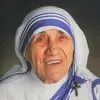 Mother Teresa
1910 - 1997
Mother Teresa
1910 - 1997
 Channapatna Ramaswami Simha
1942 - 2014
Acting and directing in Kannada films
Channapatna Ramaswami Simha
1942 - 2014
Acting and directing in Kannada films
 Bharat Bhushan
1920 - 1992
Playing Baiju Bawra in the 1952 film
Bharat Bhushan
1920 - 1992
Playing Baiju Bawra in the 1952 film
 Asima Chatterjee
1917 - 2006
organic chemist and phytomedicine researcher
Asima Chatterjee
1917 - 2006
organic chemist and phytomedicine researcher
 Shridhar Venkatesh Ketkar
1884 - 1937
chief editor of Maharashtriya Jnanakosha
Shridhar Venkatesh Ketkar
1884 - 1937
chief editor of Maharashtriya Jnanakosha
 Ahuti Prasad
1958 - 2015
Telugu film actor
Ahuti Prasad
1958 - 2015
Telugu film actor
 Malaysia Vasudevan
1944 - 2011
Playback singer and actor in Tamil cinema
Malaysia Vasudevan
1944 - 2011
Playback singer and actor in Tamil cinema
 Jaspal Bhatti
1955 - 2012
Comedian, satirist, actor, director, producer
Jaspal Bhatti
1955 - 2012
Comedian, satirist, actor, director, producer
 Vani Jairam
1945 - 2023
Playback singer
Vani Jairam
1945 - 2023
Playback singer
 S. P. Jananathan
1959 - 2021
Film director, screenwriter, producer
S. P. Jananathan
1959 - 2021
Film director, screenwriter, producer
 Satyajit Ray
1921 - 1992
Director, screenwriter, composer, illustrator
Satyajit Ray
1921 - 1992
Director, screenwriter, composer, illustrator
 James Henry Cousins
1873 - 1956
Writer, actor, critic, editor, teacher and poet
James Henry Cousins
1873 - 1956
Writer, actor, critic, editor, teacher and poet
 Ashok Kumar
1911 - 2001
Hindi film actor and singer
Ashok Kumar
1911 - 2001
Hindi film actor and singer
 A. P. J. Abdul Kalam
1931 - 2015
Missile Man of India
A. P. J. Abdul Kalam
1931 - 2015
Missile Man of India
 Dara Singh
1928 - 2012
Professional wrestler and actor
Dara Singh
1928 - 2012
Professional wrestler and actor
 Surinder Shinda
1959 - 2023
Playback singer
Surinder Shinda
1959 - 2023
Playback singer
 Gemini Ganesan
1920 - 2005
Actor in Tamil cinema
Gemini Ganesan
1920 - 2005
Actor in Tamil cinema
 Mohandas Karamchand Gandhi
1869 - 1948
Leader of the Indian independence movement
Mohandas Karamchand Gandhi
1869 - 1948
Leader of the Indian independence movement
 Chhabi Biswas
1900 - 1962
Actor and director
Chhabi Biswas
1900 - 1962
Actor and director
 Rajesh Pillai
1974 - 2016
Film director, screenwriter, and newsreader
Rajesh Pillai
1974 - 2016
Film director, screenwriter, and newsreader
 Bullet Prakash
1976 - 2020
Acting in Kannada films and TV serials
Bullet Prakash
1976 - 2020
Acting in Kannada films and TV serials
 Pralhad Keshav Atre
1898 - 1969
Writer, poet, educationist, founder–editor
Pralhad Keshav Atre
1898 - 1969
Writer, poet, educationist, founder–editor
 Chandulal Shah
1898 - 1975
director, producer, screenwriter, founder
Chandulal Shah
1898 - 1975
director, producer, screenwriter, founder
 Gaganendranath Tagore
1867 - 1938
Painter and cartoonist of the Bengal School of Art
Gaganendranath Tagore
1867 - 1938
Painter and cartoonist of the Bengal School of Art
 Diogo do Couto
1542 - 1616
Historian of the Portuguese in Asia and Africa
Diogo do Couto
1542 - 1616
Historian of the Portuguese in Asia and Africa
 Manchanahalli Rangaswamy Satyanarayana Rao
1948 - 2023
Chromatin Biology and Cancer Biology
Manchanahalli Rangaswamy Satyanarayana Rao
1948 - 2023
Chromatin Biology and Cancer Biology
 Gufi Paintal
1944 - 2023
Actor, casting director
Gufi Paintal
1944 - 2023
Actor, casting director
 Srikumar Banerjee
1946 - 2021
Nuclear scientist and engineer
Srikumar Banerjee
1946 - 2021
Nuclear scientist and engineer
 Dinkar D. Patil
1915 - 2005
Marathi film director,scriptwriter,dialogue writer
Dinkar D. Patil
1915 - 2005
Marathi film director,scriptwriter,dialogue writer
 Turaga Sundara Rama Prasada Rao
1939 - 2022
Petroleum engineering and heterogeneous catalysis
Turaga Sundara Rama Prasada Rao
1939 - 2022
Petroleum engineering and heterogeneous catalysis
 Zubeida Habib Rahimtoola
1917 - 2015
Social worker, political activist
Zubeida Habib Rahimtoola
1917 - 2015
Social worker, political activist
 Joseph Panimayadas Chandrababu Rodriguez
1927 - 1974
Comedian, actor, director, singer
Joseph Panimayadas Chandrababu Rodriguez
1927 - 1974
Comedian, actor, director, singer
 Sarfraz Rafiqui
1935 - 1965
Flying ace and war hero
Sarfraz Rafiqui
1935 - 1965
Flying ace and war hero
 Ratan Lal Brahmachary
1932 - 2018
Biochemist and pioneer of tiger pheromone studies
Ratan Lal Brahmachary
1932 - 2018
Biochemist and pioneer of tiger pheromone studies
 Mohan Samant
1924 - 2004
Early Indian modernist painter
Mohan Samant
1924 - 2004
Early Indian modernist painter
We Need -- admin in

